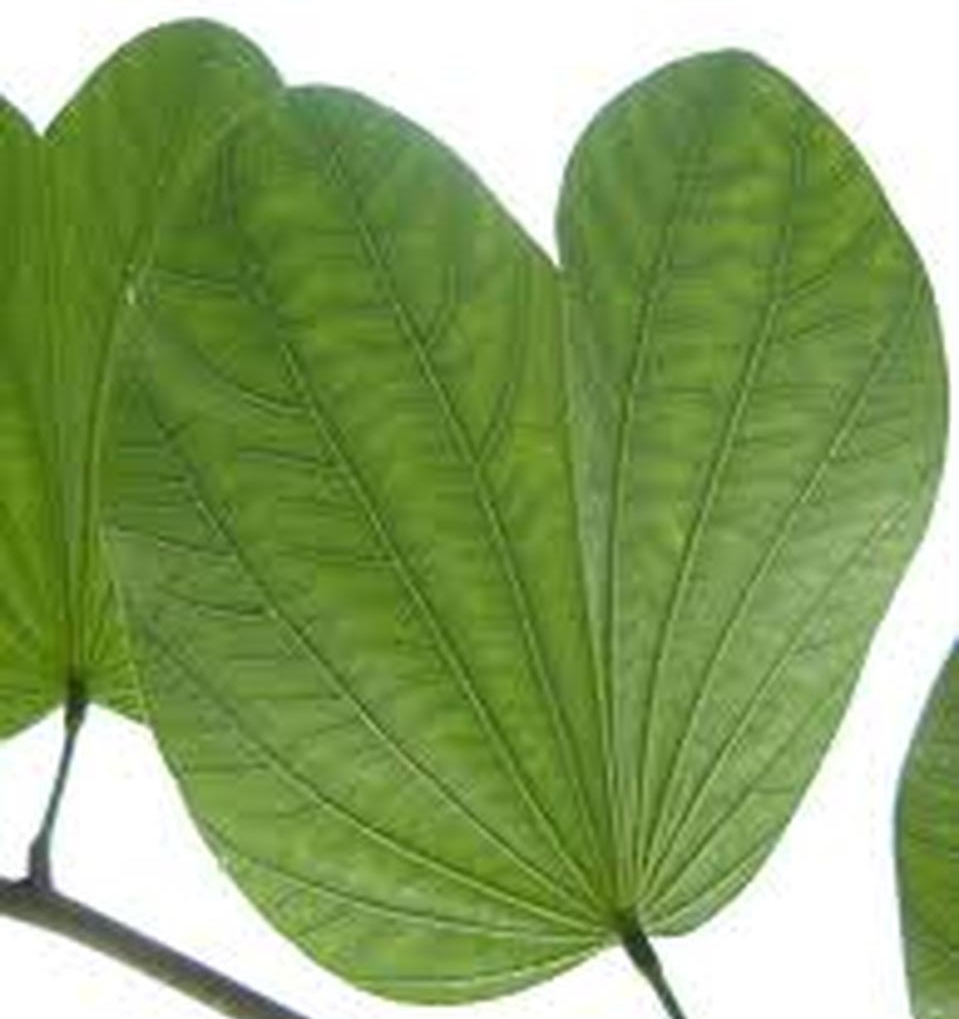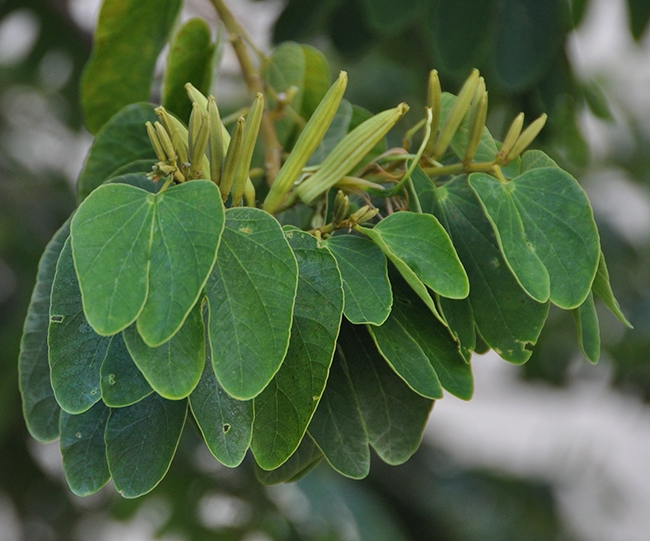|
Traditional Herbal for High Cholesterol,
Diabetes, Stones and Contraception
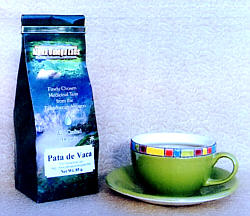
Pata de Vaca (Cow's Foot)
( Bauhinia forficata Link)
Tea leaves of Pata de Vaca
Code 324 -- Price: $4.95
Ground bark: 85 gr. (net wt)
Makes 4 Gallons of Tea
(Using 20 g. or ≅ 6 T.
to make one gallon)
Pata de Vaca Capsules : Code 325C -- $18.95
(100 x 260 mg. veggie capsules)
Order Now
 Email
Email
 Summarized Description:
Pata de Vaca (Cow's Foot) Summarized Description:
Pata de Vaca (Cow's Foot) is one of our
traditionals.
It has been used for millenium as a contraceptive in
both Meso and South America; however, it's most common
use in the Ecuadorean Amazon is to treat what we would
call "high cholesterol," diabetes, and kidney ailments.
 ata de Vaca
is a commonly used traditional from the Amazon,
used as a healing agent by the indigenous to treat a wide variety of health
conditions (see below). ata de Vaca
is a commonly used traditional from the Amazon,
used as a healing agent by the indigenous to treat a wide variety of health
conditions (see below).
Use & Protocol
 I. Preparation --- if you can boil water, you
can make this product: Professional herbalists will
recognize this as a standard decoction. I. Preparation --- if you can boil water, you
can make this product: Professional herbalists will
recognize this as a standard decoction.
- Add roughly 20 grams (about 1/4 of the bag of product) to
one gallon (about 4 liters) of purified water, or proration thereof.
Boil for 45 minutes
and then strain or filter out the remnants of the product.
- Drink as needed to address indication.
Warnings / Contraindications
 Duke notes that Pata de Vaca may
"pontentiate other hypoglycemic drugs; contraindicated in hypoglycemia (RAI).
Should be avoided in treatment of Tityus serrulatus scorpion envenoming,
it may enhance venom lethality (X15507364). As of July 2007, the FDA Poisonous
Plant Database listed two titles alluding to toxicity of this species." (1) Duke notes that Pata de Vaca may
"pontentiate other hypoglycemic drugs; contraindicated in hypoglycemia (RAI).
Should be avoided in treatment of Tityus serrulatus scorpion envenoming,
it may enhance venom lethality (X15507364). As of July 2007, the FDA Poisonous
Plant Database listed two titles alluding to toxicity of this species." (1)
Shelf-Life
 This product is dehydrated, so its
functional shelf-life is well in excess of two years. This product is dehydrated, so its
functional shelf-life is well in excess of two years.
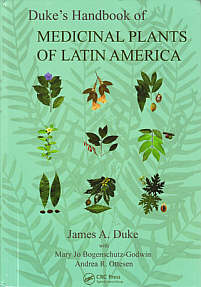
Medicinal Activities
 Further information for practitioners:
World-famous botanist Dr. James Duke attributes the following activities
to this plant (p. 92-93; see hardcopy cover at right),
drawn from the extant literature. (See his graduation for "level of
efficacy" on our amazon traditionals page;
followed by Duke's bibliographic abbreviations (in capital letters),
which we identify
on a separate page.) Further information for practitioners:
World-famous botanist Dr. James Duke attributes the following activities
to this plant (p. 92-93; see hardcopy cover at right),
drawn from the extant literature. (See his graduation for "level of
efficacy" on our amazon traditionals page;
followed by Duke's bibliographic abbreviations (in capital letters),
which we identify
on a separate page.)
- Anticoagulant (1; X15763387);
- Antidiabetic (1; X15165145; X15186500; X15501431);
- Antioxidant (1; RAI);
- Astringent (f; RAI);
- Depurative (f; RAI);
- Diuretic (f1; MPG; RAI);
- Hypocholesterolemic (1; MPG; RAI; X14709915);
- Hypoglycemic (f1; MPB; MPG; RAI);
- Hypotriglyceridemic (1; RAI; X14709915);
- Molluscicide (1; RAI);
- Tonic (f; RAI);
- Uterorelaxant (1; RAI);
- Vermifuge (1; RAI).
Indications
 Further information for practitioners:
Duke provides the following indications for this plant: Further information for practitioners:
Duke provides the following indications for this plant:
- Bleeding (f; RAI);
- Cystitis (f; MPB);
- Dermatosis (f; MPB; RAI);
- Diabetes (f1; MPB; RAI; X14709915; X15186500; X15501431);
- Diarrhea (f; RAI);
- Dysuria (f; MPB; RAI);
- Elephantiasis (f; RAI);
- High Cholesterol (1; MPG; RAI; X14709915);
- High Triglycerides (1; RAI; X14709915);
- Hyperglycemia (1; MPB; MPG; RAI);
- Leprosy (f; RAI);
- Nephrosis (f1; RAI);
- Obesity (f; RAI);
- Oliguria (f; RAI);
- Polyuria (f; RAI);
- Snake Bite (f1; RAI; X15763387);
- Stones (f; RAI);
- Syphilis (f; RAI);
- VD (f; RAI);
- Worms (f1; RAI).
Footnotes
- Duke, James A., Medicinal Plants of Latin America, CRC Press, 2009, p. 93.
- Ibid., p. 93
- Ibid., p. 92
|
 To U.S. Users: To U.S. Users: This product
have not been evaluated by the U.S. Food & Drug Administration.
It is not intended to diagnose, treat, cure, or prevent any disease.
|
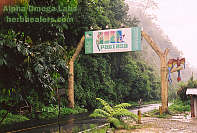 Sourcing From
Sourcing From
The Amazon
 All the materials used to
make our Pata de Vaca are wild-crafted and harvested
from deep in the the provinces of Pastaza and Moreno Santiago, near the
Peruvian border. There are no cultivated varieties.
Click photo to enlarge.
Dosages &
Ethnobotanical
Usage
 Duke provides a "food pharmacy
potential" score for this plant of, "FNFF=?" ("Very questionable survival food)
. . . [Indeed, I know its use in the Ecuadorean Amazon to only be medicinal].
Dosage: 1 cup leaf tea 2-3x/day (RAI); 2 g leaf capsule/tablet 2-3x/day (RAI);
3g/day for 56 days reportedly helps diabetes (MPG).
 Here is an additional ethnobotanical use cited by Duke (2):
- Brazilians use as astringent, depurative, diuretic, and tonic, for CNS disorders,
cystitis, diabetes, diarrhea, elephantiasis, intestinal worms, kidney stones, leprosy,
obesity, polyuria, and stones (MPG; RAI).
Traditional Use
As Contraceptive
 Although the native peoples
I work with have made no mention of Pata de Vaca as a contraceptive,
it figures so prominently in Duke's opening discussion of the plant
that it bears repeating:
 "I was amazed to hear from my
Belizean friend, Rosita Arvigo, and my Peruvian shaman very similar
folklore about a Mayan and an Amazonian Bauhinia species, respectively,
'This is an old remedy for birth control among Mayan women,
now apparently almost forgotten. Prepared from a handful of vine that has been
boiled in 3 cups of water for 10 min., a cup is consumed before each meal
all during the menstrual cycle. It is said that this dose is effective
for up to 6 months. Drunking this decoction during 9 menstrual cycles
is said to produce irreversible infertility in woman.' That's quoted
from Arvigo and Balick's (1993) great book, Rainforest Remedies --
One Hundred Healing Herbs of Belize.
 But here's the story my Amazonian
shaman recounted, independently, as we stood in the Amazonian rainforest
of Loreto, Peru: "Mr. Duke, this is the icoja vine, which has a secret use
among some of the Amazonian Indians, like the Huitoto Indians. If the woman
takes a tea of the trunk at the beginning of her period, and drinks it
three times a day throughout her period, it will prevent conception. Further,
if she does the same thing for 6 periods, she will be renderred permanently
sterile.' So, relatively unrelated Huitoto and Maya Indians, with unrelated
languages, some approximate thousand miles apart, had evolved, perhaps
empirically, pretty much the same sterility story about Bauhinia . . . (3)
|



